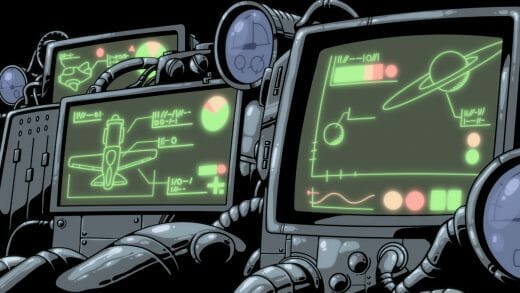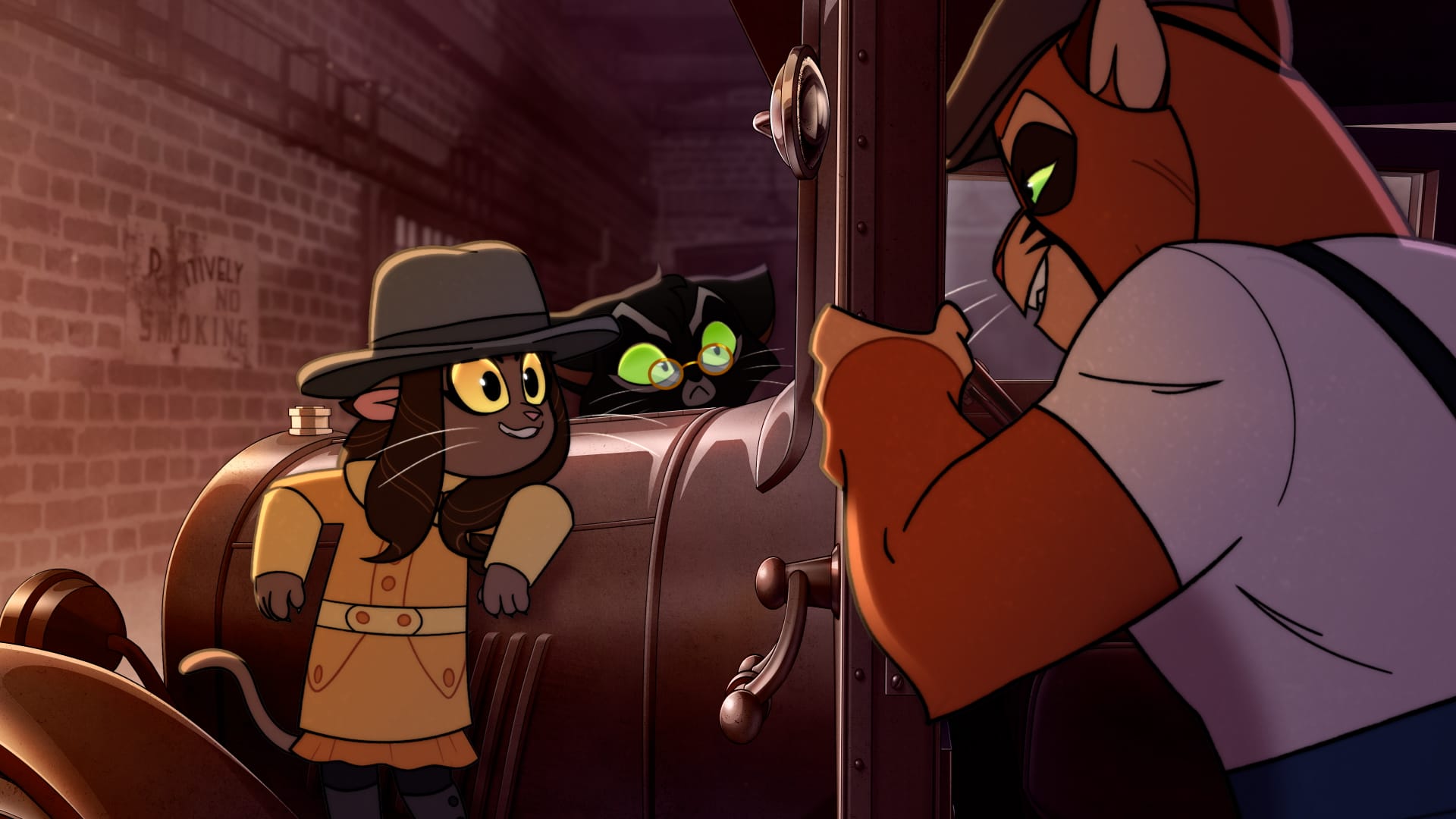
Lackadaisy is a long-running, Eisner-nominated webcomic written and drawn by Tracy Butler. The series takes place in an alternate version of Prohibition-era St. Louis, inhabited by cats! The plot follows the rise and fall of the Lackadaisy speakeasy, as its owner, Mitzi May, pursues unconventional strategies for keeping the struggling speakeasy open.
After fourteen years of publishing Lackadaisy online, Tracy Butler teamed up with Fable Siegel to develop an animated adaptation of Lackadaisy, which is published on YouTube. To date, the Lackadaisy production team released a pilot followed by mini-episodes as well as behind-the-scenes content that chronicles the development of the animated series.
Fable’s industry credits include work with the likes of Titmouse, Starburns and Hazbin Hotel. We caught up with Fable to chat about the development of Lackadaisy into an animated series, how their team has approached funding for the project, and how they’re building a sustainable model for ongoing funding.
Can you share a bit about Iron Circus’ new studio?
Fable: Iron Circus Animation is a new branch of Iron Circus Comics. Iron Circus Animation was created to support the production of Lackadaisy, but it’s by no means restricted to producing only Lackadaisy. We intend to work on other productions in the future.
We created Iron Circus Animation because the existing crew of Iron Circus Comics didn’t have animation backgrounds, but I do. So I put together an animation team, and I confer with Spike at Iron Circus Comics, making sure things are coordinated between us.
Can you share with us how you became involved in Lackadaisy, and how the project got rolling?
Fable: I’ve been working in the animation industry for over a decade, and before Lackadaisy I was doing a lot of animation on commission for people. Through doing commissions I was able to keep myself visible online. I became involved with Lackadaisy early on, because Tracy reached out to me. I was going through a bit of a dry spell and I was in-between jobs.
When I mentioned to Tracy that I could do animation, she was interested in having me put together a pitch package for adapting Lackadaisy into an animated series. I put a pitch together and shopped it around. But no one was interested. That was disappointing, but I knew we could probably get it made if we created a crowdfunding campaign for the project.
We didn’t have any crowdfunding experience ourselves, but Tracy and I knew Spike Trotman, who’s had a lot of success with crowdfunding creative projects . We pitched the idea to her to see if Iron Circus Comics would support Lackadaisy. Spike loved the idea!
We officially had Tracy on board as the creator, myself as the animator, and Spike to support with a crowdfunding strategy. Without Spike’s inclusion it would have been an uphill battle to start creating Lackadaisy. It’s really hard to make a cartoon, and it’s even harder when you have to do all the challenging stuff like raising funds and ironing out legal aspects – on top of the creative stuff.
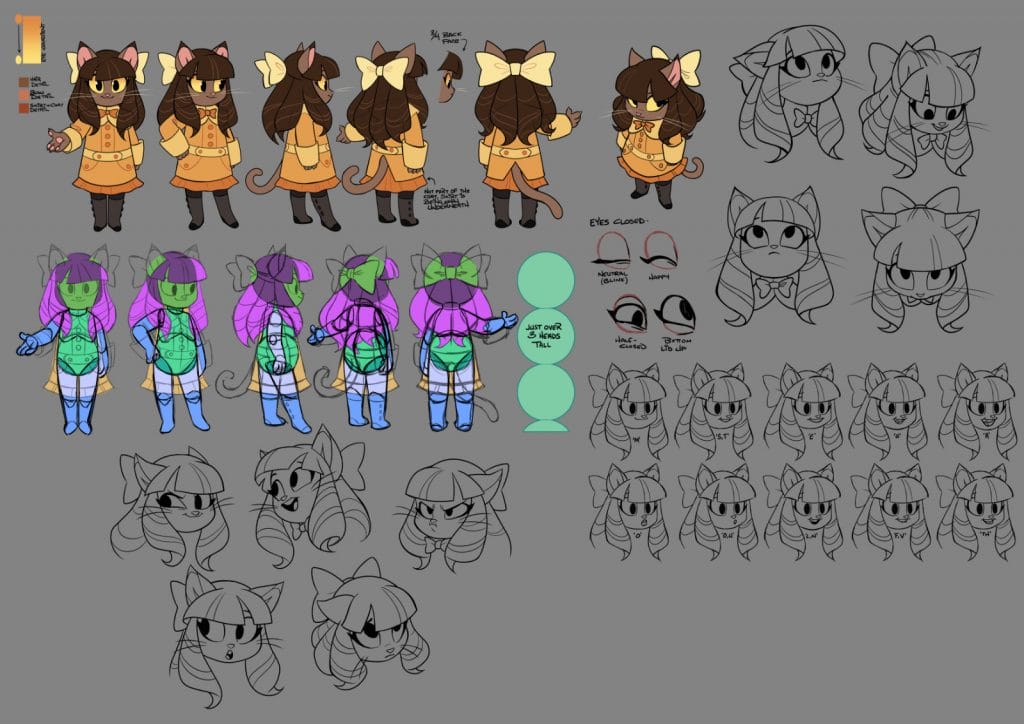
The last time I spoke with you and Tracy, you were in the beginning stages of crowdfunding for Lackadaisy’s pilot. Funding was raised, and the short was released in 2023. What was the reception of the pilot like? Did you learn anything from making that first Lackadaisy animation?
Fable: The reception of the short film was very good. In fact, it was good enough that when we started another crowdfunding campaign to get a season of Lackadaisy funded, we raised 2 million dollars.
Making Lackadaisy’s pilot and putting it out there was a learning experience. We learned what to do, and what not to do. We also realized that we definitely want to put out Lackadaisy content consistently. To do this, we need to improve our methods of production, educate our crew, and fix aspects of the pipeline.
Making the short film was a great step toward taking better advantage of tools we have access to, like Toon Boom Harmony and Blender. Moving forward we will be able to give our animation more polish, and make a smoother production pipeline for our animators and compositors.
Did surpassing the goal and reaching 2 million change anything about your production?
Fable: It didn’t change any of our goals, but the extra money we have raised gives us much more runway to turn our production into something that is sustainable longterm. By surpassing our funding goal we’ve been able to invest in initiatives that are really beneficial, like creating Lackadaisy merchandise.
We have been able to invest more than we expected in merchandise production. Selling that merch has helped create a revenue stream that keeps our production well-funded. It’s a model that can help support Lackadaisy on an ongoing basis, which is exciting.
The reality of a production like Lackadaisy is that we can only create so many cartoons in so much time – we can’t churn one out every week. And so merchandise is also a way for our audience to stay engaged with Lackadaisy, and support us in a direct way.
Actions like buying merchandise, commenting on our videos, sharing our content, and making fanfic or fan art, keep the energy and momentum behind our production going. It’s really motivating to see how excited our fans are.
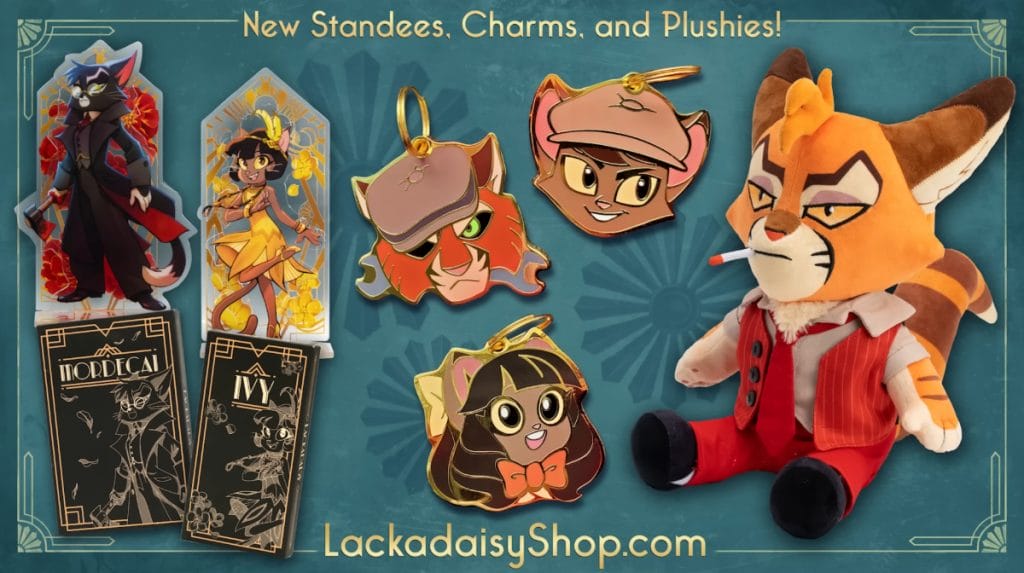
Lackadaisy has more than a million subscribers on YouTube. Does YouTube ad revenue help support production?
Fable: Yes, we earn some ad revenue from YouTube, but the amount we earn is pretty low when you compare it to the amount of money that we invest to create one episode. Each episode has a team of people behind it – it gets expensive, fast. If our production costs were low, or if we could publish two videos on a weekly basis, I could see ad revenue from YouTube being more impactful.
YouTube revenue rates are low, and they are tied to channel activity and video volume. At most we’ll make a few thousand dollars per episode, which doesn’t offset the cost of production at all. We have 20-40 employees at one time, and they all need to be fairly paid.
It’s not really feasible for us to get our production costs low enough, and to publish at the rate that we would need for ad revenue to work as a sustainable financial support. We really do rely on selling merchandise to get the ongoing funding we need.
Did crowdfunding help to grow the audience and community around the project?
Fable: Crowdfunding definitely helped us grow our audience. This is what’s so great about crowdfunding – it also functions as a marketing campaign. It helped us reach beyond our own network of people. Although our network gave the campaign the initial attention, it’s through shares and word-of-mouth that really helped us grow beyond that close network.
A huge benefit of working with Iron Circus Comics is that they had established a good reputation already for delivering unique stories. This meant that by collaborating with them, we had access to their audience. This definitely gave us an added bump in growing our audience.
When the pilot was released, we had 100k subscribers on YouTube. We had fought tooth and nail for those subscribers. It was a joint effort by us all; including Tracy, who did a lot of social media promotion to make sure Lackadaisy got noticed. Our initial 100k subscribers gave us solid ground to release the pilot because we knew we could expect half of those subscribers to see the video.
YouTube’s algorithm will start to notice people watching, which starts a snowball effect. When our original subscribers started watching the pilot, the algorithm noticed, and the video started to be pushed out to viewers beyond our subscribers.
Along with publishing the pilot, we made sure to keep our growing audience engaged. We made sure to publish work in progress videos, share concept art, and run livestreams to show where we were at with production. It got people even more invested and interested, and they wanted to keep watching and sharing. People became our animation evangelists, spreading the word about Lackadaisy.
We weren’t interested in a viral hit, we wanted something that was a reflection of the effort we put in. Not just the cartoon, but efforts in marketing that cartoon. And those behind the scenes videos seem to be working. People who like it buy merch and tell their friends about it, which is very affirming.
Entertainment is a form of community for people. When we watch movies and cartoons, listen to podcasts, or engage with other media, we create little communities of people who treasure that media and want to talk about it with others. That’s one of the reasons to become an artist. The community aspect of art is a great thing to be a part of because you have the opportunity to create a positive impact.
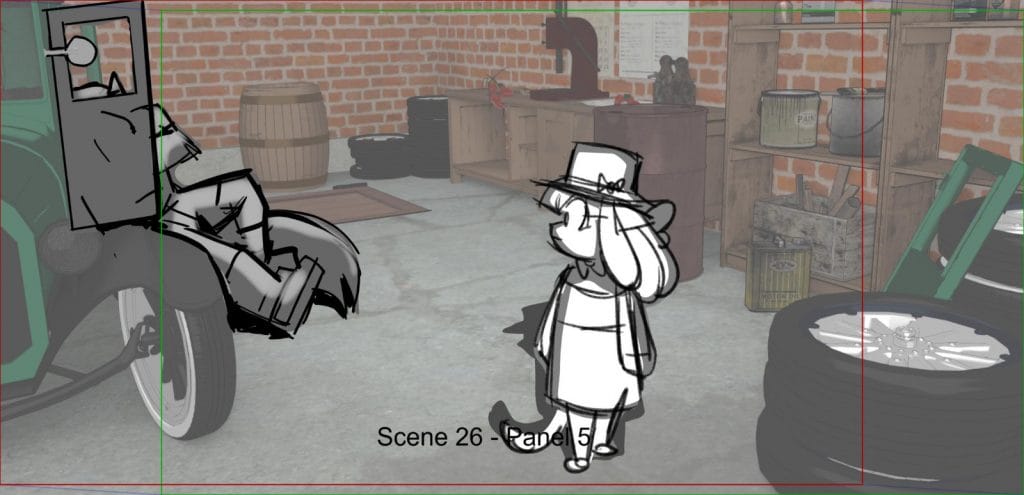
Can you catch me up on what’s happened since publishing the pilot – particularly the subsequent phase of funding for season 1 of Lackadaisy, through Backerkit?
Fable: Lackadaisy was originally pitched as a season. The goal has always been to make a full series out of it. But the shape of the goal shifted based on the resources we had available. When we ran our first crowdfunding campaign, we weren’t sure that we could fundraise enough to support an entire season. We knew we could raise enough for a short film, so we started there.
The pilot isn’t episode 1 of the season. It’s more of a sample platter of Lackadaisy that condenses the core elements of the story-world, to get people interested. Many of those viewers turned to Tracy’s comics, which gave them more of an idea of what they could expect from a season of Lackadaisy. This led to people being willing to donate to our Backerkit campaign in support of the full season.
Crowdfunding is a great tool, but if we relied on it alone, we would always have to crowdfund. This is why we have invested so much in merchandise. It helps us fund cartoons, and then we can make new merchandise to sell based on new cartoons, and it becomes self-sustaining. We can invest money in improving processes, improving pay, and making jobs easier by hiring more people and splitting up work.
With all your success in raising funding for Lackadaisy, I’m curious to hear how the team supporting the project has grown or evolved since you created the pilot?
Fable: When we worked on the pilot we had a massive team, because some people could only afford to work on one shot. But now, thanks to our funding, we can pay people well enough to have them work with us full-time.
One of my major goals was to raise our pay rates and make it easier for people to work on this project without making any sacrifices. While we’re doing pretty well, we are microscopic compared to the kind of funding that the studios who focus on advertising campaigns get.
We are building on top of prior successes as much as possible, and we are definitely on an upward trajectory. As we gain momentum, our goal is not to view our artists as cogs in a machine – we view our artists as essential elements of our production team that we intend to keep around long-term. We want to invest in our artists, and we want them to find their work gratifying.
You are now releasing Lackadaisy mini-episodes. What has the response to these mini-episodes been like?
Fable: Currently, we have 2 short vignettes and 1 mini episode that kicks off season 1. We are finding that there’s a lot of enthusiasm around these vignettes and mini-episodes. We are also finding that publishing them gives us great insights into what our audience loves, and what they want to see. For example, we’ve noticed that when these short episodes are character focused, they do really well.
Creating vignettes and mini-episodes has also helped to clean up aspects of our pipeline that were a bit rough. Working on them helps prepare us for season 1 production, and has bought us time to work on the script and make sure things are tight. It also bought time for pre-production before we started animating properly. You can’t do things on the fly, we learned that during the pilot.
How have you grown as a director since working on Lackadaisy? What are your biggest lessons or takeaways from directing this project?
Fable: I’ve grown a lot while working on Lackadaisy – I hadn’t been a showrunner before this. Much of what I’ve learned are strategies around production. The biggest challenges can be organizational. Like, I have to make sure I am doing my job efficiently so that I don’t hold anyone up. As our production has grown, I’ve had to learn to delegate work, and help build dedicated teams.
A takeaway I’ve learned that was difficult but necessary is that if you run into problems that could hurt production, it’s important to stop, take a breath, and look at it from a neutral perspective. You have to view problems as a puzzle to be solved instead of as a world-ending disaster.
I have had to learn to become the person who can take a step back in challenging moments, and handle problems with grace. I have to thank Tracy for helping me figure all that out – she’s been a great mentor throughout my experience working on Lackadaisy.
What is next for Lackadaisy? Any exciting updates you can share?
Fable: This July of this year, we partnered with Glitch. They have a merchandise department called Final File Project that helps projects like ours build merchandise to sustain production. So they have been super helpful in streamlining merchandise production, and reducing the amount of time and resources we spend on it.
They use our brand to create merchandise which we then approve, and they get a cut of the sales. This enables us to focus on creating more cartoons, which creates opportunities for new merchandise. This partnership is mutually beneficial, because we are helping each other grow.
- Interested seeing more from the world of Lackadaisy? Subscribe to the production’s official YouTube channel for more videos and announcements.
- Are you ready to get started on your independent production? Artists can download a free 21-day trial of Toon Boom Harmony.



